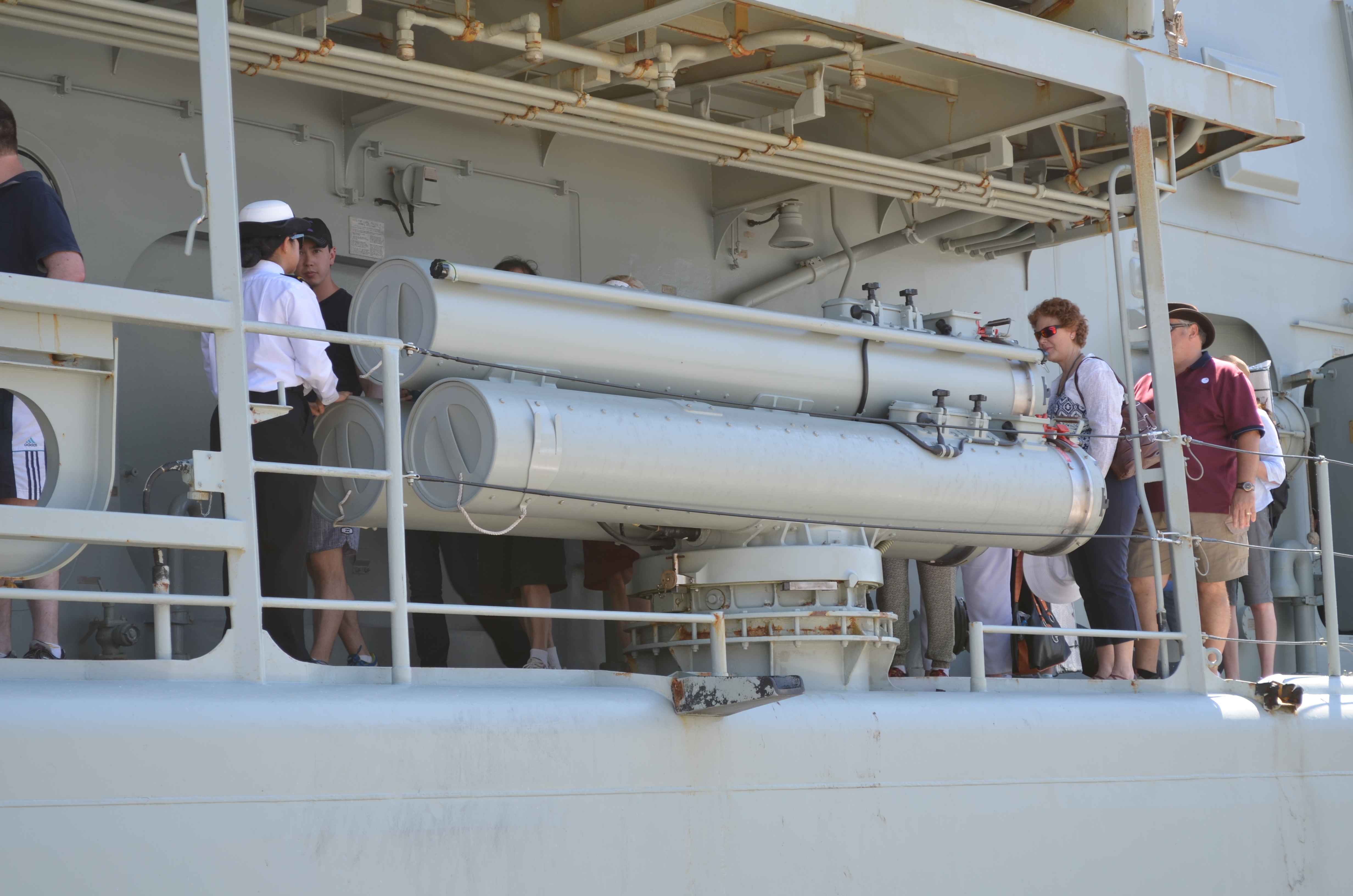Mk 32 on:
[Wikipedia]
[Google]
[Amazon]
Mark 32 Surface Vessel Torpedo Tubes (Mk 32 SVTT) is a torpedo launching system designed for the
 * ''Long Beach''-class cruiser
*
* ''Bainbridge''-class cruiser
*
* ''Truxtun''-class cruiser
*
*
*
*
*
* ''Long Beach''-class cruiser
*
* ''Bainbridge''-class cruiser
*
* ''Truxtun''-class cruiser
*
*
*
*
*
 *
*
*
*
United States Navy
The United States Navy (USN) is the maritime service branch of the United States Armed Forces and one of the eight uniformed services of the United States. It is the largest and most powerful navy in the world, with the estimated tonnage ...
.
History
The Mark 32 has been the standard anti-submarine torpedo launching system aboard United States Navy surface vessels since its introduction in 1960, and is in use aboard the warships of several other navies. During the FRAM Program, , and destroyers were modernized and fitted with two Mark 32 torpedo tubes on each side of their midship. The torpedo tubes' service extended to multiple other countries such as Mexico, South Korea, Taiwan, Turkey, Egypt and many more due to the fact that decommissioned American ships were bought or transferred over to them throughout the years, notably s. Japan uses the HOS-301 torpedo tubes which are redesignated version of the Mark 32.Design
Most versions (referred to as modifications or mods) are triple-tube sets that can be rotated or trained to face a target. The exception is the Mod 9 sets, which only have two tubes and are fixed in position. The Mark 32 can fire torpedoes of the Mark 44, Mark 46, Mark 50 (from the Mod 17 tubes onwards), and Mark 54 designs, and can be modified to use other torpedoes (such as the MU90 Impact aboardRoyal Australian Navy
The Royal Australian Navy (RAN) is the principal naval force of the Australian Defence Force (ADF). The professional head of the RAN is Chief of Navy (CN) Vice Admiral Mark Hammond AM, RAN. CN is also jointly responsible to the Minister of ...
frigates, or Royal Navy
The Royal Navy (RN) is the United Kingdom's naval warfare force. Although warships were used by English and Scottish kings from the early medieval period, the first major maritime engagements were fought in the Hundred Years' War against ...
units using Sting Ray torpedoes). The tubes are designed to be fired remotely, but manual firing controls are fitted as a backup to all but the s Mod 15 sets, as all aspects of the tubes' operation are controlled remotely. The launch is powered by compressed air in a rear flask, which also doubles as each tube's breech, and the torpedoes are fire-and-forget
Fire-and-forget is a type of missile guidance which does not require further external intervention after launch such as illumination of the target or wire guidance, and can hit its target without the launcher being in line-of-sight of the targe ...
weapons.
The launcher can be made from fibreglass
Fiberglass (American English) or fibreglass (Commonwealth English) is a common type of fiber-reinforced plastic using glass fiber. The fibers may be randomly arranged, flattened into a sheet called a chopped strand mat, or woven into glass clo ...
, or with a fibreglass liner encased in metal. The tubes were designed to be weatherproof and capable of storing torpedoes for long periods, but this is only practical with regular maintenance. Each triple-tube set weighs around unloaded, with variations between mods.
Onboard ships
United States
* * * * * * * * * * * * * * ''Long Beach''-class cruiser
*
* ''Bainbridge''-class cruiser
*
* ''Truxtun''-class cruiser
*
*
*
*
*
* ''Long Beach''-class cruiser
*
* ''Bainbridge''-class cruiser
*
* ''Truxtun''-class cruiser
*
*
*
*
*
Japan
* * * * (1959) * * * * * * * * * * * (2010) * * * * ''Ishikari''-class destroyer escort * * * ''Kashima''-class training ship * ''Asuka''-class experimental shipCanada
* * * * * *Taiwan
*Italy
* * * * * * * *Australia
* * *South Korea
* * * * * * * *Indonesia
* * *See also
*List of naval weapon systems
The list of naval weapon systems aims to provide reference about weapons mounted on surface combatant warships, and smaller craft and submarines found throughout the history of naval warfare. The list is sorted alpha-numerically by system service ...
References
Torpedoes Cold War anti-submarine weapons of the United States Military equipment introduced in the 1960s {{Missile-stub